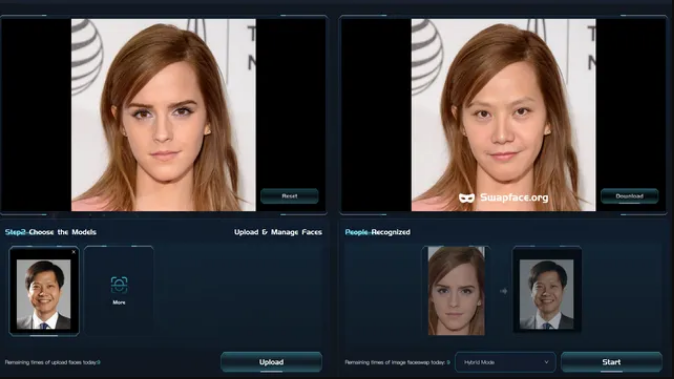Exploring the Realism of Face Swap Technology
As digital technology advances, face swap applications continue to improve, offering ever more realistic and high-quality results. These apps, powered by deep learning and artificial intelligence, can now achieve near-perfect swaps that are sometimes indistinguishable from real images to the untrained eye. But just how precise can these swaps be? Let's dive into the factors that contribute to the accuracy of face swap technology and the challenges that remain.
Technological Foundations of Face Swap
The backbone of high-accuracy face swaps is advanced AI algorithms known as deep neural networks. These networks are trained on vast datasets that contain millions of face images, which help the AI learn a wide range of human facial features under various conditions. For instance, some of the top-performing face swap technologies can differentiate and adjust for factors like lighting, angle, and facial expressions with a precision rate that can exceed 95% under controlled conditions.
Challenges to Accuracy
Despite the high potential accuracy, several factors can affect the outcome of a face swap:
- Lighting and Shadows: Discrepancies in lighting between the source and target faces can lead to obvious mismatches that disrupt the realism of the swap.
- Facial Orientation and Expression: Extreme angles and facial expressions can pose challenges for face swap algorithms, which might struggle to seamlessly blend such features.
- Resolution and Quality of Images: Higher resolution images provide more data points for the algorithms to work with, leading to better results. Conversely, low-quality images can degrade the swap's realism.

Face Swap in Action
Applications like Snapchat and Reface show the potential of face swap technology to create fun, engaging content. These platforms use real-time processing to swap faces in videos and images instantly, often with surprisingly accurate results. Whether it's swapping your face onto a blockbuster movie character or exchanging smiles in a group photo, the accuracy can be impressive, though sometimes minor glitches remind us that the technology is still evolving.
Ethical Considerations and Future Developments
As the accuracy of face swaps improves, so does the potential for misuse, such as creating misleading or harmful content. This raises important ethical questions about the responsibilities of both developers and users of face swap technology. Looking ahead, ongoing improvements in AI and machine learning promise even more precise and versatile applications, possibly extending beyond entertainment to fields like virtual reality and teleconferencing.
Stay Informed and Engaged with Face Swap Technology
For those curious about the technical details, potential applications, and ethical considerations of face swap technology, visiting face swap provides a wealth of information and resources. This platform can help both novices and experts better understand and utilize this fascinating digital tool.
The accuracy of face swap technology has reached impressive levels, driven by sophisticated AI algorithms. However, the technology's full potential is still being unlocked as developers continue to tackle challenges related to lighting, angles, and expressions. As this tool evolves, it remains crucial for users to understand both its capabilities and its risks.